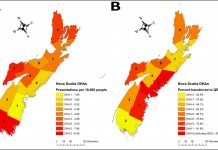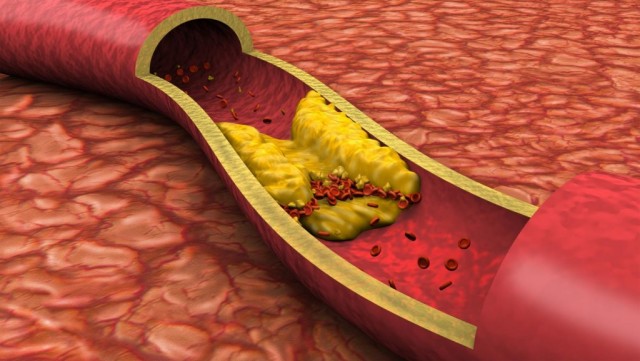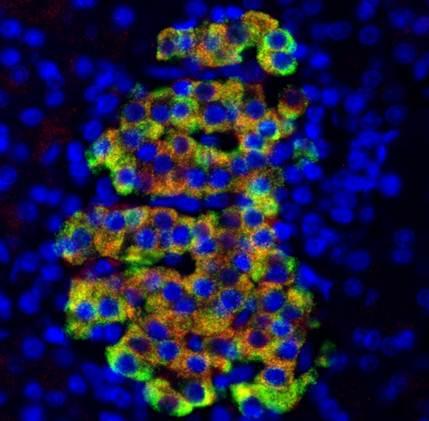For the first time, researchers have shown that high triglycerides � a type of blood fat � are a strong independent predictor of a person�s risk for stroke, according to a report in today�s Circulation: Journal of the American Heart Association. "High triglycerides are associated with ischemic stroke and transient ischemic attacks (TIA),� says David Tanne, M.D., lead author of the study. �To the best of our knowledge, this study is the first to indicate that high triglycerides expose heart disease patients to increased risk for stroke beyond cholesterol."
In light of this finding, healthcare providers should include triglycerides as part of their global risk assessment for stroke in all individuals and know that people can have elevated triglycerides even if their cholesterol is normal, says Tanne, who is director of the stroke unit, department of neurology, at Sheba Medical Center, Tel Hashomer, Israel.
�More effective screening and detection of high blood triglycerides and treatments to modify this stroke risk factor could further reduce the health burdens of stroke,� says Tanne.
Stroke is the third-largest cause of death in the United States after coronary heart disease and all forms of cancer. It is a leading cause of serious, long-term disability in the United States. The most common type of stroke, accounting for about 80 percent of all cases, is ischemic stroke, which is caused by interruption of the blood supply to the brain.
Major risk factors for stroke include heredity, smoking, increasing age, high blood pressure, diabetes, heart disease, and sickle cell anemia. High blood cholesterol, physical inactivity, obesity and overweight are secondary risk factors.
Continue Reading Below ↓↓↓
For six to eight years, researchers followed 11,177 patients with coronary heart disease (CHD) but no history of stroke or TIA. Medical histories were obtained and blood lipids assessed. Participants were 40 to 74 years old, and 78 percent were men. Researchers identified 941 individuals with cerebrovascular disease, of whom 487 had ischemic stroke or TIA. A TIA is a �mini-stroke� that produces stroke-like symptoms but no lasting damage.
Individuals who had a stroke or TIA had higher than average levels of triglycerides and lower levels of HDL cholesterol. About one-fourth of individuals in the study had triglyceride levels of 200 mg/dL or higher, a level that increased their risk for stroke by nearly 30 percent. The increased risk associated with high triglycerides was found across subgroups of age, gender, patient characteristics and cholesterol.
Tanne�s group conducted the study to shed light on the links among blood lipids and, in particular, high blood triglycerides and the risk of ischemic stroke. Individuals with high triglycerides usually also have high blood pressure, insulin resistance and obesity � a cluster of abnormalities that is called the metabolic syndrome or �syndrome X.� This research better clarifies the association between lipids and stroke because it looks at triglycerides independently in a large group of patients, says Tanne.
"Our main finding in this study is that elevated blood triglycerides increase a person�s risk of suffering an ischemic stroke,� Tanne says. �Those with high blood triglycerides (over 200 mg/dL) have a nearly 30 percent higher risk of suffering a stroke, after taking into account other risk factors for stroke such as high blood pressure, cigarette smoking or diabetes."
A secondary finding was that individuals with high HDL (high density lipoprotein, the good cholesterol) were less likely to have a stroke. Triglycerides are found in fats. Excess levels of triglycerides increase concentrations of two types of fat particles: chylomicrons and very-low-density lipoproteins. These fat particles may contribute to the fatty deposits that obstruct blood flow, increasing the risk for ischemic stroke, says Tanne.
Triglyceride levels are measured by a standard cholesterol blood test.
The link between triglycerides and stroke is still under investigation, says Tanne. "However, in addition to the direct atherogenic effect of triglycerides, these lipids appear to be a marker of a series of other changes that could worsen atherosclerosis or cause blood clots. High triglycerides are associated with several abnormalities of the body�s clotting systems, which may contribute further to their association with cardiovascular disease."
Further studies are required to see if a similar link between blood triglycerides and stroke exists in individuals without heart disease. If so, specific drugs or drug combinations for lowering blood lipids may need to be used to prevent strokes among those with high blood triglycerides, says Tanne.
The American Heart Association recommends the following triglycerides guidelines: Normal range is less than 150 mg/dL; borderline-high is 150 to 199 mg/dL; high is 200 to 499 mg/dL; and very high is 500 mg/dL or higher. Following a low-fat diet, exercising and treating overweight can lower triglyceride levels.
American Heart Association. Other authors of the study are Nira Koren-Morag, Ph.D.; Eran Graff, Ph.D.; and Uri Goldbourt, Ph.D.
Continue Reading Below ↓↓↓
Source: American Heart Association











